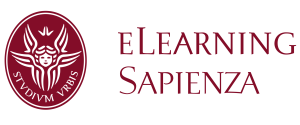Section outline
-
===========================================================================
LECTURE N. 1 wed 28/2/2017 aula 2
Let me share a list of lemmas that might remind some passages of the discussion in the classroom.
-Biophysics of XXI century
-Physical Biology /Biological Physics
-Operational definition of living matter
-Deep learning + big data
-Computational / Non computational Processes (Roger Penrose, Brian D.Josephson)
-“law without law” (John A Wheeler, 1982)
-Bacterial Decision making as computation (Dennis Bray, Wetware)
-Active Matter
===========================================================================
LECTURE N.2 fri 02/03/2018 aula Careri 1st part
What is biophysics? (see e.g. Zhou2011.pdf/ BIOPH2018_L1.pdf)
Dedication to Enrico Gratton
2nd part
Representation of a system through a set of “states”:
Basic thermodynamic approach (notion of local equilibria)
Simple derivation of a master equation for the transition probabilities between states (detailed balance)
see Leonard Susskind’s lecture at https://www.youtube.com/watch?v=ApUFtLCrU90&list=PLf3cQYSsXvsCW-HYbZDYLVXOodxD-QQb_
(see: Susskind & Hrabovsky, the theoretical minimum, chap.1)
HOMEWORK Essai: what is biophysics? By Tuesday night march the 6th
Activities: 4 -
============================================================================
LECTURES From 3 to 8
N. 3 wed 07/03/2018 aula 2 NE
MICRO/MESO/MACRO and CELL BIOLOGY
Order of magnitude estimations (see Snapshot2010.pdf from Cell Biology by the Numbers)
Fluxes and transport: compartmentalisation of a cell
Generalised Ohm's laws: friction coefficients
Fick's first law
Entropic forces (associated to gradients of free energy)
Einstein-Smoluchowski equation
See: D&B (DiLl and Bromberg chap 17) see also PBC (Physical Biology of the cell 13.1)
Homework: practice with Snapshot2010 locate it in the website of the book cell biology by the numbers and raise some questions.
Further readings on fluctuation-dissipation: the first (Sevik2008) is quite professional whereas the second is an example of a very good pop writing (Baldassarri2011).Reading the second paper is HIGHLY RECOMMENDED
==========================================================================
LECTURE N. 4 fri. 9 March 2018 room 5 NE
STATISTICAL DYNAMICS FLUCTUATION THEOREMS AND BIOPHYSICS
(See Careri1973, The Fluctuating Enzyme, in Quantum Statistical Mechanics in The Natural Sciences, B. Kursunoglou, S.L. Mintz and S. M. Widmayer Eds. Plenum, New York 1973)
Statistical dynamics behind transport phenomena (see Ghosh2006)
Diffusion of Particles Toward a sphere (diffusion controlled reactions) [D&B chap- 17 p.314]
Onsager Reciprocal Relations and the thermodynamics of Irreversible processes [D&B chap 17 p.324]
Ensemble averages vs averages over trajectories
==========================================================================
LECTURE n.5 mon 12/3/2018
CELL ENERGETICS
Interplay di forze deterministiche e termiche alla nanoscala (PBC 5.1.1)
Mass and Energy Budget of the cell (P.B.C 5.1.2)
Study material: cell energetics.pdf
===========================================================================
LEZIONE N. 6 mer 14/3/2018
INTRODUCTION TO STOCHASTIC THERMODYNAMICS
(Micro/meso/macro)
Statistical dynamics of mesoscopic objects in a thermal bath
Langevin's equation (brownian motions)
Idea: Specialise statistical thermodynamics to non equilibrium stationary states (with non-zero fluxes and forces and with detailed balance violation)
Statistical dynamics associated to a chemical reaction (what is a chemical reaction?)
(Example: Enzyme+ATP->ADP+ Enzyme; note: the enzyme has mesa-states between it jumps...see;
Zhang2012 eq (1) e (2)))
Probability scheme and trajectories of a meso-system
Chemical reactions and mesoscopic demons
Basic thermodynamic relations: specialize to mesoscopic systems
(V. Zhang2012 eq. from (3) to (14)
Osmotic equilibrium as an example of using (11) at equilibrium.
Intra and inter cellular osmotic equilibria (introduction).
Osmotic equilibria, interfacial water and macromolecules: the idea is that the surface of mesoscopic osmolytes establishes a supracolligative
interfacial osmotic equilibrium that makes the colligative and interfacial concentrations differ, the effective osmotic concentration is less than the colligative one because the interfacial water changes its free energy w.r. to the bulk. The overall osmotic pressure in the osmometer diminishes and it is compensated by a pressure exerted on the mesoscopic macromolecules ( idea by G. Briganti, never pushed to its complete development)
Study materials:
Review by Zhang et al 2010 , Stochastic theory of non equilibrium steady state and its appications, Phys. Rep. 510 (2012) 1-86
See also: Seifert2017
The stochastic dynamics of ribosomes is investigated, through Cryo_EM data in Dashti2014
=========================================================================================
LECTURE N.7 mon 19/3/2018
Non Equilibrium Steady States of Mesoscopic Systems and Master equations
Physical idea of the statistical dynamics of Macroscopic and Mesoscopic systems:
free-energy landscape, microscopic dynamics and its clustering: energy barriers and jumping time scales
Concrete example of a cycling (big) enzyme
CASE1 Macroscopic system with M1,M2,…,MN chemical components in steady states and in equilibrium and non equilibrium steady states. Combining master equation and detailed balance.
CASE2 Mesoscopic equilibrium and non equilibrium states
matrix of transition probabilities, master equation for the occupation probabilities of the states.
extension of the formalism from the macroscopic setting to the mesoscopic setting
Study material: Zhang2012 eqs.from (14) to (25)
HOMEWORK
1 download and instal on your lap/desktop the visualisation code CHIMERA (https://www.cgl.ucsf.edu/chimera/)
2 get from the Protein data bank (http://www.rcsb.org) the structure file of the human hexokinase
3 visualise its STRUCTURE, through Chimera.
=====================================
LECTURE n.8 wed 21/3 9-11 aula 2 NE
ENTROPY PRODUCTION AND TRANSITIONS BETWEEN MESO STATES
In as nutshell, exaustive discussion of equations from (29) to (33) and of par. 2.3.2d in Zhang2012.
To reconnect the discussion to basic statistical physics: discuss the simple model of a perfect gas of magnetic dipoles in external magnetic field
(v. Lucidi_Careri.pdf)
Exercise 1 derivare esplicitamente le equazioni da (29) a (31) di Zhang2012.
Exercise 2 "map" equations from (29) a (33) in Zhang2012 to equations from (9) to (13) in
Seifert2017
Activities: 2 -
LECTURE n. 9 fri 23/3/2018 room 5 NE
THE RIBOSOME AS A BROWNIAN MACHINE (Dashti2014)
INTRODUCTION TO CRYO-ELECTRON-MICROSCOPY (Czanowski2016)
A REMINDER OF BASIC BIOLOGY I (slides basic_biology_track_2018)
See also the Nobel Lectures and slides by https://www.nobelprize.org/nobel_prizes/chemistry/laureates/2017/
Activities: 1 -
This section contains a memo on the discussion of Lecture 10 mon 26th of march 2018 room 2 9-11
-Reductionism and the absence of a fundamental scale
-What is a molecular structure?
-The Born-Oppenheimer adiabatic approximation
-The coupled equations for electrons and nuclei (ab initio MD)
-Hamilton equation for the motion of nuclei
-Helmann-Feynman theorem
-Stati a temperatura negativa di un modello di gas perfetto di spin immerso in campo magnetico esterno
study materials
Anderson72_more_is_different.pdf
slides BIOPH18_L10.pdf
Tuckerman_Born-Oppenheimer.pdf
Activities: 1 -
LECTURES 11 to 13 from the 28th of march to april 6th 2018
What is molecular fluorescence emission.
Jablonsky diagram: singlet and triplet electronic molecular states. Fluorescence/phosphorescence.
Radiative and non-radiative decay channels.
Absorption spectra/ emission spectra: Stokes shift.
Electric dipole transitions. Franck-Condon Principle.
Fluorescence Quantum yields and lifetimes.
Fluorescence polarization.
Continuous distributions of lifetimes (Alcala1987).
Forster Resonance Energy Transfer (FRET)
Scheme of a basic fluorimeter (T configuration).
Introduction to the FRAP technique: the FRAP recovery function (follow PBC chap. 13.1 and 13.2.3)*.
Proteins intrinsic fluorophores: Green fluorescent proteins.
Scheme of a Fluorescence Microscopy. Confocal microscope, tomography. Two-photons spectroscopy.
Study Materials: Chapter 1 from J. R. Lackowicz, Principles of Fluorescence Spectroscopy, Springer 2010. See also: D. Jameson, Introduction to Fluorescence, CRC press 2014 chapp. 1, 2 and 3.
*This topic is optional.
Activities: 1 -
Lectures n. 14 and 15 and 17: mon 23, fri 27 of april and 4 of may 2018.
ENTROPY RULES
Structures as free energy minimisers PBoC 5.5
The marginal stability of protein structures as a compensation between enthalpy and entropy
Mechanical forces/entropic forces
Stabilisation against solubility vs misfolding and aggregation (Positive and negative design)
Entropy and hydrophobicity (PBoC 5.5.1)
The hydrophobic effect as an entropic force.
The residual entropy of ice (Pauling model 1935)
Activities: 1 -
LECTURE N. 16
The rationale of Bayesian methods: conditional probabilities, Bayes formula.
What is a pattern.
Inferential structure determination and the
"Molecular Sociology" of the cell.
Activities: 1 -
LECTURES N. 18 fri 7/5/2018
Equilibrium models for non equilibrium situations
Latice models for solutions
Saturation curves, sigmoidal curves (cooperative effects)
Ligand-receptor binding, Langmuir isotherms
Hill's equations.
See Physical Biology of the cell chap. 6
Activities: 1 -
LECTURE N. 19 of 9th of may 2018.
- Equilibria in crowded environments, crowding and binding, lattice models of solutions, osmotic pressure in crowded environments, depletion forces (PBC, 14.2)
- Crowded dynamics: diffusion in crowded environments (PBC, 14.3.2)
-Regular and anomalous diffusion in crowded environments (PBC, chap. 14; crowding.pdf, Dix2008, Zhou2008, Mika2011)Activities: 1 -
STATISTICAL PHYSICS OF GENE EXPRESSION (introduction to basic Systems Biology)
LECTURE N. 20 fri may 11th
this is an area of modern biophysics that, to be sharp, originated around 2006, from many
contributions (first of all super-resolution fluorescence microscopy and the use of CCDs)
but with a prominence - for the clarity of their works - of Xie’s group at Harvard University (https://bernstein.harvard.edu). As an introduction to this field of study I suggest that you give a glance to this page: https://bernstein.harvard.edu/research/probing_gene_expr.htm where you will find mention of the basic reference. A lecture by Jeff Gore, which introduces and comments Xie’s contributions can be found in video at:
https://ocw.mit.edu/courses/physics/8-591j-systems-biology-fall-2014/lecture-videos/introduction-to-stochastic-gene-expression/
-introduction to the competitive (chance/constraints) stochasticity in living systems
-digression on deterministic/probabilistic cellular automata
reference to chap. 19 of PBoC which is, in fact, an introduction (à la Rob Phillips) to
integrative, cellular systems biology.
Study materials:
Statistical Mechanics of gene expression (Kondev’s notes from the net)
-birth-death processes (rate equation)
-Uncontrolled transcriptional regulation
-Chemical master equation for p(n.t), which obeys Poisson statistics
Introduction to the reading of N. Friedman et al., linking stochastic Dynamics to Population Distribution: An analytical Framework of Gene expression, PRL,97:2006)
in which a general master equation is derived and analytically solved through Laplace’s transform (leading to a Gamma Distribution), which is also computed numerically, using the Gillespie algorithm.
Activities: 1 -
Poisson distribution and regulation of gene transcription ( see e.g. Kondev's notes)
Fano Factor
see PBoC 19.3.1, 19.3.2, 19.3.3, 19.3.4
Fano's factor is a ratio which is used in detector physics.
as a reference you can see the classic textbook R. Leo, Techniques for Nuclear and Particle Physics Experiments. Par. 5.3
Activities: 1 -
Lectures n. 22 and 23 and 24, wed 16 and fri 18 of may 2018 and monday 21st of may 2018
Gillespie' algorithm is a stochastic simulation algorithm, based on a montecarlo procedure that
is currently used in systems biology to numerically simulate kinetic master-equations.
Kinetic deterministic rate equations are the model for chemical kinetics in large volumes, whereas SME are the
probabilistic models for chemical reactivity in confined volumes where fluctuations cannot be neglected.
The Michaelis-Menten approximation for the rate equations of enzymic catalysis has been the
main theoretical approach in vitro. In vivo stochastic effects play a role and the Gillespie algorithm is the natural extension
of the classic MM approach.
Rate equations for the rapid equilibrium model (PBoC 15.2.6)
Michaelis-Menten Kinetics of enzymatic catalysis (Proc 15.2.7)
Reverse Michaelis-Menten (Fabrini2011, Tang2015)
List of computational tools for chemical kinetic (Deterministic and Stochastic Simulations)
COPASI (copasi.org)
StochPy (Marleeveld2013)
You can download the programming tools here below from Sapienza with your INFOSTUD ID
(https://campus3.uniroma1.it/campus/indexlogin.php)
in particular: Mathematica & Matlab.
Activities: 1 -
Activities: 0
-
Activities: 0
-
Activities: 0
-
Activities: 0
-
Activities: 0
-
Activities: 0
-
Activities: 0
-
Activities: 0
-
Activities: 0
-
Activities: 0
-
Activities: 0
-
Activities: 0
-
Activities: 0

